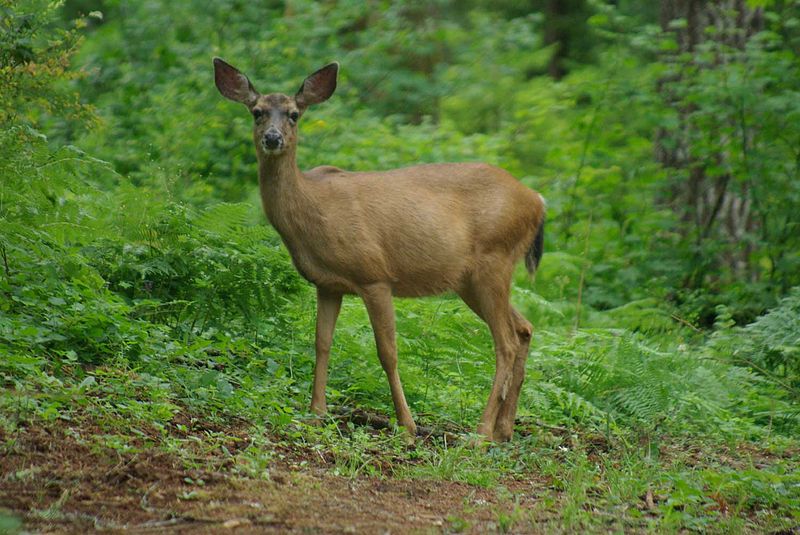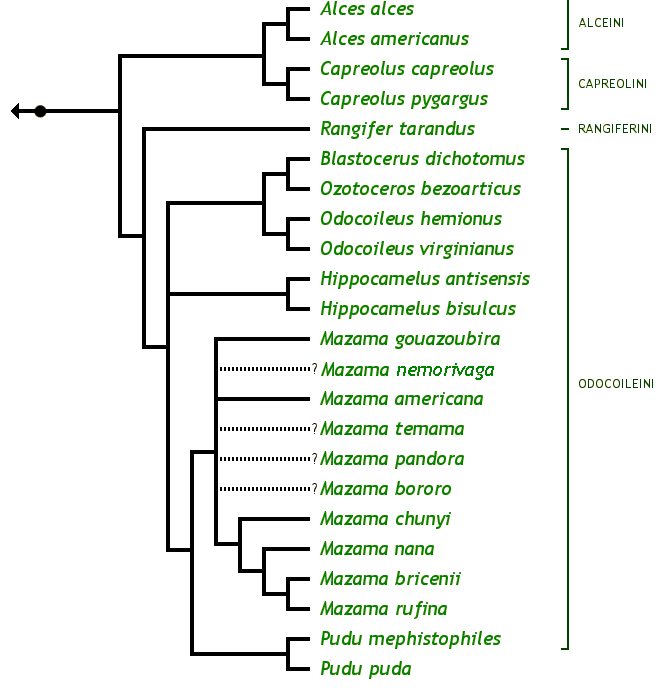
Classification
Domain: Eukarya
Kingdom: Animalia
Phylum: Chordata
Class:Mammalia
Order: Cetariodactyla
Family: Cervidae
Scientific name: Odocoileus hemionus columbianus
Domain Eukarya: Columbian black tailed deer (Odocoileus hemiounus columbianus) are in the Domain Eukaraya. Characteristics that place the black tailed deer in the domain eukaraya all relate to the cellular level (Campbell et al. 2008). A eukaryotic cell is a complex structure with internal membranes(Campbell et al. 2008). The internal membranes create organelles that have specific functions (Campbell et al. 2008).
Kingdom Animalia: Black tailed deer are in the Kingdom Animalia. The characteristics that classify organisms in Animalia kingdom all rely on other organisms for nutrients (heterotrophic) and are multicellular (Myer 2001).
Phylum Chordata: Black tailed deer are in the phylum Chordata. The main characteristic of the chordate phylum is the notochord (Myer 2001). The Notochord is a rod like structure that is dorsal (back side) of the gut and when fully developed is the length of the organism’s body (Myer 2001). Notochords stiffen and provide support during locomotion (Myer 2001).
Class Mammalia: Black tailed deer are in the class Mammalia. All Mammalia mothers have mammary glands that produce milk for their offspring (Campbell et al 2008). Other characteristics that place the black tailed deer in the class Mammalia are hairs, fat layer under the skin, respiratory and circulatory system and differentiated teeth (Campbell et al 2008).
Order Cetariodactyla:The even toes ungulates have become and are the most successful
group of big herbivores (Huffman 2006). These animals can be found
indigenous almost all over the world with the exception of
Antarctica and Australia (Huffman 2006). The ancestor of this entire
lineage is the artiodactyls, a very well known species based on its
vast amounts of fossils (Huffman 2006). The fossil history dates
back to about 54 million years ago (Huffman 2006). Prior to that
there were 18 families that have then gone extinct (Huffman 2006).
There is a belief that the original cetaceans evolved from the
Achaeoceti, which was a primitive whale type thought to live about
50 million years (Huffman 2006). However, do to the lack of
evolution of hooves, whales are not depicted in the image below
(Huffman 2006).
What all the
species in this group have in common is obviously the hove where the
development of the front limbs have lost the thumb, or nonexistent
(Huffman 2006). The digits have also fused to become two individual
bones to become the hooves (Huffman 2006). Now the back hooves have
all four, but there are only to that are weight bearing (Huffman
2006).
Family Cervidea: Black tailed deer are in the family cervidea normally referred as the “deer family.” The characteristic that unite this family are mostly physical traits. One of these traits is the antlers that are found on the males (Holmes et al 2011). To learn more about the antlers of the black tailed deer visit the adaptations page.
 Meaning of Scientific Name:
Meaning of Scientific Name:
The scientific name of the black tailed deer is Odocoileus hemionus
columbianus. The word "Odocoileus" originated from the Greek
language (Meaning of Scientific Name 2010). "odous" means tooth, and "koilos" means hollow
(Meaning of Scientific Name 2010). Hollow
tooth is explaining the depressions of the molar teeth (Meaning of
Scientific Name 2010). The word "hemionus" means "mule" or "part
ass"(Mule Deer 2009) This refers to the large ears of the black
tailed deer.
A Closer Look
In the image bellow illustrates the sub species of the Capreolinae
family (Huffman 2006). The Odocoileus hemiounus columbianus is most
closely related to that of the Odocoileus virgineanus and in that
lineage it is to believe that the first to evolve from this lineage
is the black tailed deer (Mihaylo 2009). Before the whole Capreolinae was
named after the Odocoileus. In this group the biggest is the
Odocoileus virgineanus (Huffman 2006). The origin is not known very
well do to the lack of fossils, however with DNA analysis shows that
the Capreolinae is Eurasian and is approximately 5 million years old
(Huffman 2006).
Head back to the Home
page or Learn more about Habitat.
Go to
MultipleOrganisms.net.

